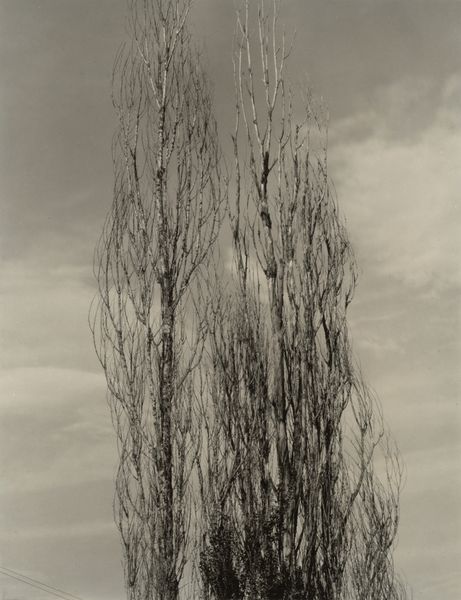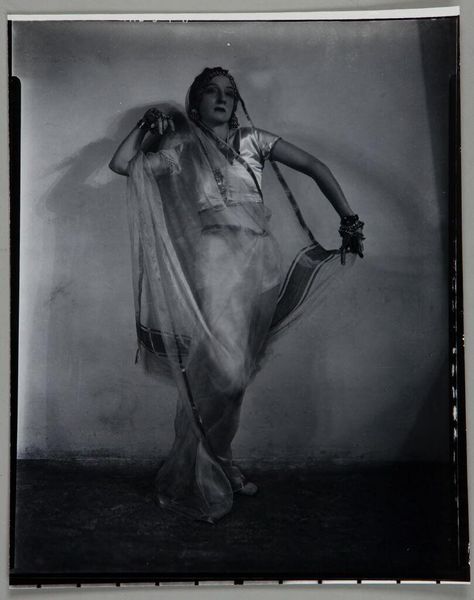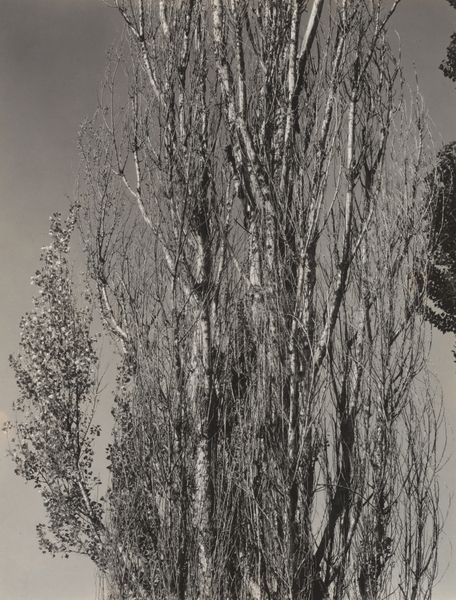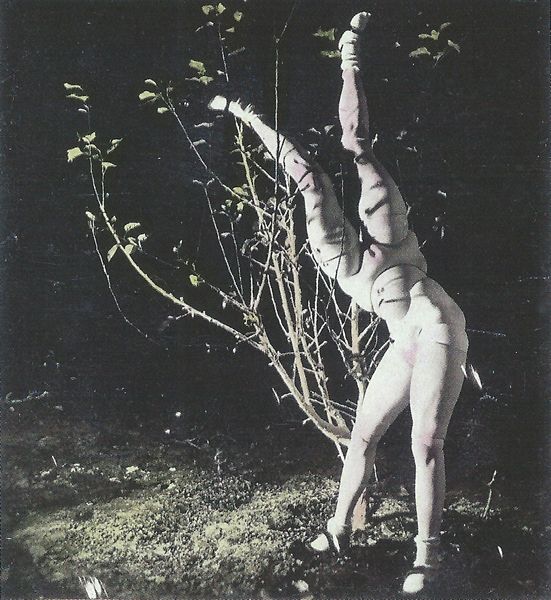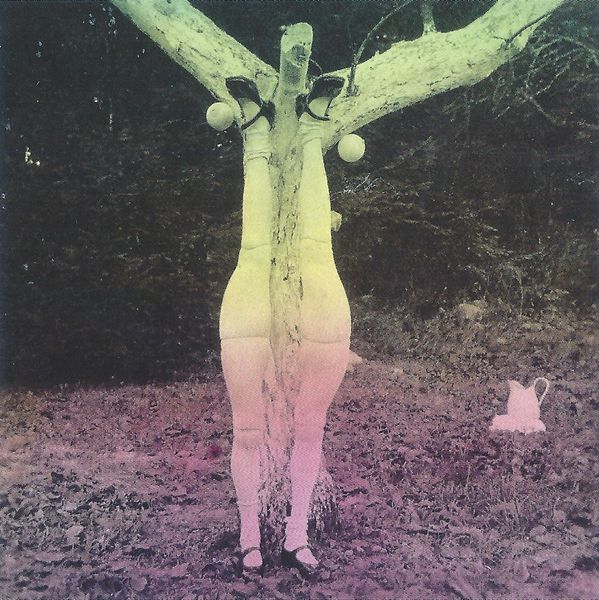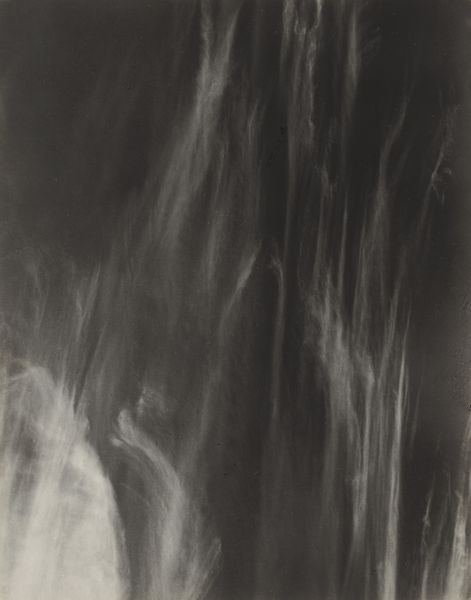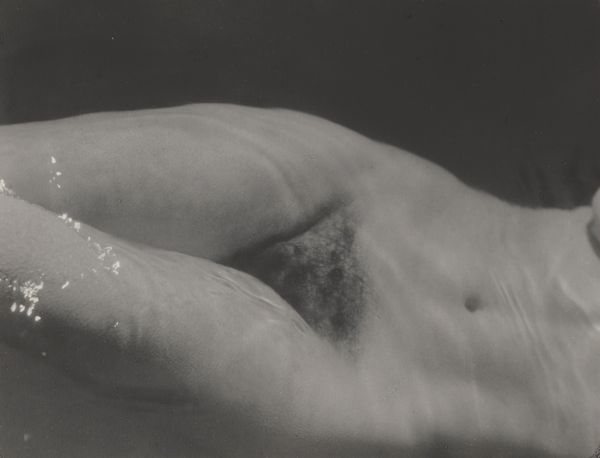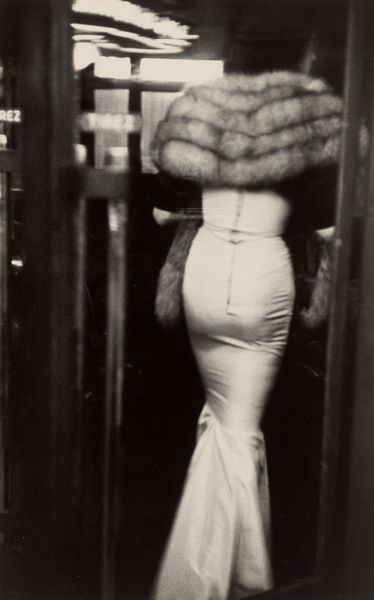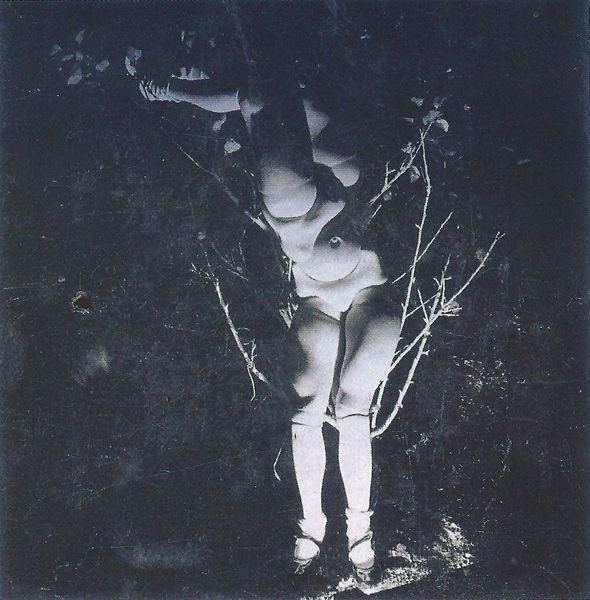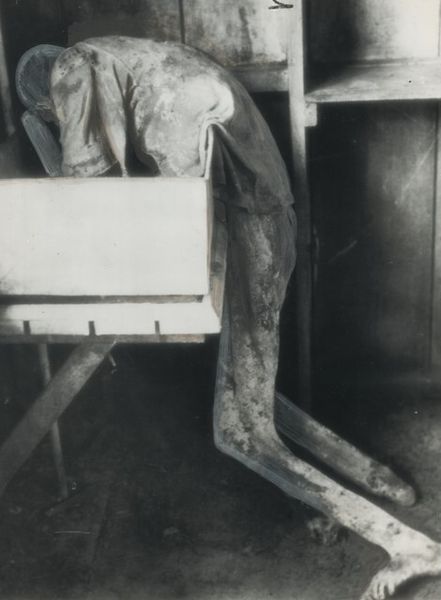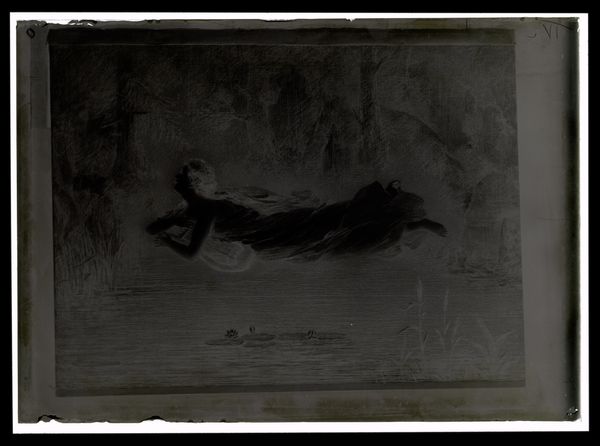
Dimensions: image: 33.2 x 20.1 cm (13 1/16 x 7 15/16 in.) sheet: 39 x 27.3 cm (15 3/8 x 10 3/4 in.)
Copyright: National Gallery of Art: CC0 1.0
Curator: Robert Frank’s gelatin silver print, “Dead Horse/Angers," from 1949. What are your initial thoughts on this photograph? Editor: There is a sense of immense stillness and sadness about this image. It appears to show a horse suspended in a processing area, the greyscale amplifying the somber mood. There’s a vulnerability that cuts right through. Curator: Frank captured this image in postwar France. Examining it through the lens of social context, we can consider it as a reflection of trauma. The image evokes conversations about labor and animal rights as well as about the unseen costs of societal production. It makes one reflect on the structures of power embedded in seemingly banal spaces. Editor: Indeed. Considering animal symbolism, horses are often associated with freedom, power, even nobility. Here, those attributes are inverted, suggesting perhaps a more brutal, material reality and prompting an array of considerations on human-animal dynamics. Look at how the animal bows as though offering itself. Curator: Precisely. The choice of perspective, looking up at the animal, evokes a sense of dominance and exposes what Giorgio Agamben would consider a “zone of indistinction” between human and animal, shedding light on dehumanization. Frank’s lens, one could argue, dissects the psychological dimensions of labor under duress. Editor: The composition also enhances the symbolism. The presence of tools alongside the hanging animal alludes to utilitarian purposes. The animal, now, as a material resource. The lighting also guides the viewer's eyes directly towards the horse's head. It reminds me of depictions of sacrificial animals, throughout classical antiquity. Curator: And by understanding Frank’s tendency to depict marginal figures in stark light, the photograph becomes even more pronounced and reveals the underbelly of a postwar society that valorized growth at the cost of silent victims. Editor: Definitely. Frank provides a timeless visual representation of the multifaceted relationship between humanity and other species. It certainly encourages us to think about the different layers and associations that define the symbolic significance of this scene. Curator: Absolutely. It's these intersectional interpretations of work, identity, and sacrifice that truly breathe life into this piece, compelling us to reflect on ethical considerations regarding power structures.
Comments
No comments
Be the first to comment and join the conversation on the ultimate creative platform.

